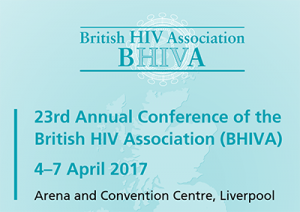Drop in HIV incidence in gay men: frequent testing, early ART and PrEP
24 April 2017. Related: Conference reports, Antiretrovirals, HIV prevention and transmission, BHIVA 23rd Liverpool 2017.
Simon Collins, HIV i-Base
The conference included the first chance for the recent exciting data on reduced HIV incidence among gay men attending five London clinics, in a joint presentation from Valerie Delpech and Monica Desai from Public Health England (PHE). [1]
This was the first formal presentation for this data, although top-line results from several London clinics were released at the end of 2016. [2]
The presentation noted that based on PHE overall national data, HIV incidence in gay men started to fall from late 2014 when approximately 550 men were diagnosed in the last quarter of 2014, to about 370 for the last quarter of 2016, with the steepest decline coming throughout 2016.
This dramatic drop was shown most strongly in five high incidence London clinics (more than 40 diagnoses a year) where incidence fell by more than 20% between 2015 and 2016: Dean St, Mortimer Market, Homerton, St Mary’s, Guy’s and St Thomas’.
Although a decline was reported by clinics outside London, the drop was more gradual (from about 220 to 180 from 4Q 2015 to 4Q 2016).
Over the same time, testing rates significantly increased at the five steep decline clinics (from 7500 to 9500 test per quarter), mainly driven by people who were repeat (rather than first-time) testers. New diagnoses fell in both new and repeat testers, but most new diagnoses were still in people testing for the first time.
Although earlier use of ART was considered as a factor behind the drop in incidence, median time to starting ART was stable at just over 100 days during 2014-2015 (compared to approximately 220 days at clinics outside London).
The study concluded that the impact of combination prevention methods was having an unprecedented impact of reducing HIV incidence and showed the need to consolidate scaling up of testing and early ART across all parts of the country for all groups at greatest risk of HIV.
Update on planned UK PrEP IMPACT study
The second part of this presentation included information about the planned PrEP Impact study – that proposes to enrol 10,000 people over three years using generic PrEP.
Even though there are no further scientific questions that would prevent PrEP being used immediately, NHS England has deferred a decision on approving PrEP for at least another three years by requiring this “implementation study”.
The primary objective is to measure PrEP eligibility and uptake, and duration of eligibility and use among people attending sexual health clinics.
Inclusion criteria are to offer PrEP to all people at high risk of HIV due to higher risk sexual behaviour, having an HIV positive partner or having partner of unknown status and at high risk of HIV. This includes cis and transgender men who have sex with men and transgender women.
The study will be based on 3-monthly visits for prescriptions and monitoring. Daily and event-based dosing will be included as appropriate. Follow-up will include HIV and STI testing including HCV according to standard of care, kidney monitoring and sexual health information.
The study will include more than 200 STI clinics across the UK for wider geographical access with first enrolment planned for late summer 2017.
Comment
The contribution from PrEP to reduction in HIV incidence might have been underestimated during this presentation.
PROUD was running through 2013 to October 2014 when early results enabled all participants to access PrEP. Anecdotally, PrEP was being accessed at PEP clinics throughout, and online access greatly expanded from August 2015, when importing generic PrEP was confirmed as legal for personal use.
i-Base published information on buying PrEP online in August 2015 and the two leading community PrEP sites, I want PrEP Now and Prepster, were launched in October 2015.
The plans for the IMPACT study have not yet explained what will happen if the study enrols rapidly within the first of the planned three years. While this would be much better for the study and participants – greater with earlier PrEP access and faster study results – it doesn’t explain how further demand for PrEP will then be met.
Several analysts, including Andrew Hill in his lecture at BHIVA on generics, have pointed out that 10,000 might be far too small. [3] If the background incidence for this study is 2%, then the study might only prevent 200 infections and that 150,000 people would need to be using PrEP to cover the roughly 3000 gay men who are diagnosed each year.
in Australia, which has a smaller population than the UK and lower HIV incidence, similar open-label studies (PrEPX, EPIC and QPrEP’D), enrolled more than 8,000 participants within one year.
It is notable that NHS Scotland has already approved PrEP, without the need for any further costly studies.
References:
- Delpech V and Desai M. Towards elimination of HIV amongst gay and bisexual men in the United Kingdom. BHIVA keynote lecture. 23rd BHIVA 4-7 April 2017, Liverpool.
http://www.bhiva.org/documents/Conferences/2017Liverpool/Presentations/170405/ValerieDelpech-MonicaDesai.pdf (PDF)
http://www.bhiva.org/170405ValerieDelpech.aspx (webcast)
http://www.bhiva.org/170405MonicaDesai.aspx (webcast) - Collins S. Four London clinics report dramatic drops in HIV incidence in gay men: PrEP, early testing and early ART likely to be key. HTB January/February 2017.
https://i-base.info/htb/31126 - Hill A. Generics: the facts. BHIVA invited lecture 1, Thursday 6 April 2017. 23rd BHIVA 4-7 April 2017, Liverpool.
http://www.bhiva.org/documents/Conferences/2017Liverpool/Presentations/170406/JohnFrater.pdf (PDF)
http://www.bhiva.org/170406AndrewHill.aspx (webcast)


